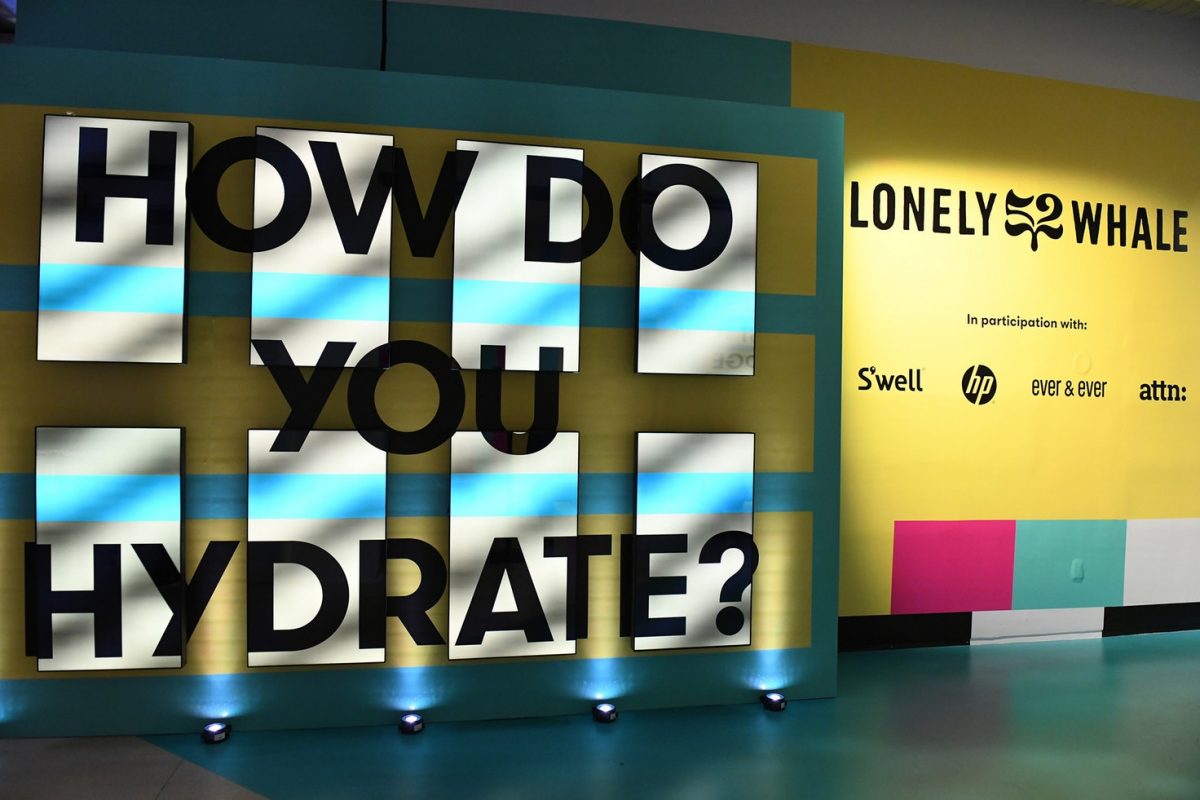“Museums” about ice cream and rosé wine attract thousands of Instagramming millennials, but the Museum of Plastic, which opens this week in New York, wants to harness that energy to make a positive impact.
Consider this: One million single-use plastic bottles are sold every minute around the world. That’s what a new campaign from Lonely Whale (the organization that led the Stop Sucking movement against plastic straws) and the ocean conservancy Point Break Foundation wants us to think about every time we drink water. But instead of bombarding people with a list of depressing facts, they’re taking a new approach.
To launch the new campaign, called “Question How You Hydrate,” the organizations are partnering with sponsors S’Well, Ever & Ever, attn:, and HP to present a pop-up Museum of Plastic in New York’s Soho neighborhood from June 8 to 12. The museum is an interactive space with areas designed to show the problem of single-use plastics, create a vision of a world without waste, and inspire action.
“We are committed to inspiring people through positivity,” says Dune Ives, executive director of Lonely Whale, which was founded by actor Adrian Grenier and film producer Lucy Sumner in 2015. “We want to engage people in the conversation and get them to be curious. We’re hoping this space inspires and gets people engaged while they have a little fun. And then, gosh darn it, do something.”
In a world where pop-up “museums” about ice cream and rosé wine are attracting thousands of Instagramming millennials, Lonely Whale decided to harness that energy to make a positive impact.
With the Strawless Ocean campaign, the organization realized that, “If we could maybe not talk like an NGO and not talk like a scientist—be science-based, but talk more like a marketer would talk—then perhaps we could inspire people to save the ocean,” explains Ives.
Young Hero, the creative agency that designed the new campaign and museum, made a conscious decision to present the facts in fun and relatable ways—even though the subject is serious. “We wanted the museum to be optimistic and dripping with attitude and to be really positive,” says Nick Panayotopoulos, the creative director of Young Hero. “We didn’t want it to be doom-y and gloomy because usually that can go the way of just, like, ‘Here are the facts, it’s very depressing,’ and we don’t really need more of that.”
Some depressing news released on June 6, in fact, highlights that a recent study by Monterey Bay Aquarium and Monterey Bay Aquarium Research Institute found that microplastics pervade the ocean’s water column and are now incorporated into marine food webs. Microplastics were found in all of the animals sampled for the study, with the most abundant types of plastic matching those commonly used in consumer products. Plastic was also recently claimed to be found at the bottom of the Mariana Trench, the world’s deepest ocean trench.
Visitors to the Museum of Plastic are led through a neon-colored path that showcases the problem—by 2050, the ocean is expected to contain more plastic than fish; 500 billion water bottles are used every year; revenue for the plastic water bottle industry is expected to reach $200 billion by the end of 2022—in dynamic and cheeky ways. For example, there is a photo-worthy giant receipt showing what $200 billion can buy instead of water bottles: Pay the Fyre Festival debt; 8 million college degrees; fix the water crisis in Flint, Michigan; and stay on Necker Island in the British Virgin Islands for a year, to name a few.
Another area illustrates what the ocean could like by 2050, either full of plastic litter, or clean and clear if we begin to take action. The exhibit then presents various solutions, like aluminum water cans, which can be infinitely recycled and reused, and reusable water bottles. The final area asks visitors to make a pledge about how they will hydrate, which is recorded. An HP screen, the world’s first one to be made with ocean-bound plastic diverted from waterways, displays the pledges.
In the end, the pop-up and accompanying campaign hope to help eliminate single-use plastic water bottles.
“We do want to make some of these plastics a thing of the past, just like something you would find that’s extinct and in a museum, or in a history book,” says Panayotopoulos.
The Museum of Plastic is free and open to the public from June 8-12, 2019, at 473 Broadway in New York City.
https://www.afar.com/magazine/pop-up-nyc-museum-shows-the-impact-of-plastic-on-our-oceans?utm_source=Sailthru&utm_medium=email&utm_campaign=061119_Ocean%20pop%20up_Wellness%20Airports%20&utm_content=B&utm_term=Daily%20Wander%20Newsletter



